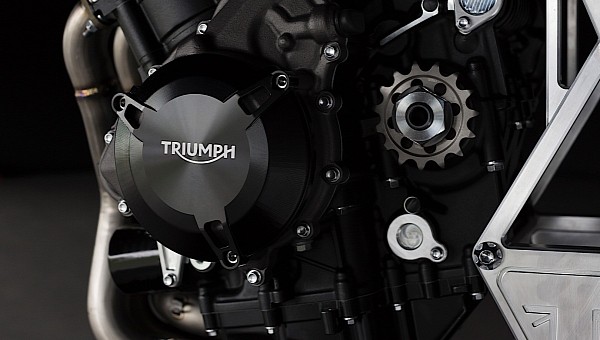Triumph Motorcycles has begun testing sustainable fuels for the engines of its models. We are not writing about the usual motorcycle engines, but the ones used in the Moto 2 TM championship. As some of you already know, Triumph Motorcycles is the sole supplier of power units for the series.
The plan is to shift the series fuel to E40 by 2024, and then make a transition to E100 by 2027. The letter “E” in the name of the fuel represents Ethanol, as you may already be familiar with it, and the numbers after it show the percentage in the fuel blend. As a reference, pump gas in Europe is mostly E5, sometimes E10, while some countries have E85.
The goal is to have a sustainable source of Ethanol, as well as to make the engines ready to run it in the percentages mandated by the blend. Fortunately for Triumph's engineers, since these bikes only have to run in competition that involves racetracks, they do not have to worry as much about cold temperatures or even cold starting, for that matter.
It is a known fact that ethanol alone, without proper additives, provides less energy than gasoline. Other problems that need to be addressed involve the hygroscopic characteristics of ethanol, which leads to rough starting and poor idle, as well as its corrosive potential, and the latter even has the unfortunate effect of accelerating fuel oxidation.
The fact that fuel ages faster is not a problem for race bikes, and neither is rough starting since they only need to be started for practice, qualifying, and race, so there is no tragedy. Adapting everything to the production motorcycles of tomorrow will be a different kind of ballgame.
In other words, getting the level of performance for a racing bike with an increased percentage of ethanol in the fuel will be a challenge, but it is something that can be overcome due to existing developments with this kind of fuel, that were already made for production vehicles.
As for cars, switching from anything over E5, in the case of older vehicles, or E10 in the case of newer models, will require multiple changes to a vehicle's fuel setup. Various gaskets that encounter fuel will need replacement, and the same goes for the fuel lines, as well as the engine mapping.
There are already numerous automobiles that can obtain more power on E85 than on regular gasoline, but also vehicles that can run ethanol alone, as well as others that can operate various percentages of ethanol and gasoline.
Vehicles ready for this from the factory are called "Flex Fuel," by most manufacturers. If you have any doubts as to what kind of fuel your vehicle allows, just read the label that is usually found on the inside of the fuel cap door. You might notice that your car does not run on some fuel blends that can be found at the pump.
The goal is to have a sustainable source of Ethanol, as well as to make the engines ready to run it in the percentages mandated by the blend. Fortunately for Triumph's engineers, since these bikes only have to run in competition that involves racetracks, they do not have to worry as much about cold temperatures or even cold starting, for that matter.
It is a known fact that ethanol alone, without proper additives, provides less energy than gasoline. Other problems that need to be addressed involve the hygroscopic characteristics of ethanol, which leads to rough starting and poor idle, as well as its corrosive potential, and the latter even has the unfortunate effect of accelerating fuel oxidation.
The fact that fuel ages faster is not a problem for race bikes, and neither is rough starting since they only need to be started for practice, qualifying, and race, so there is no tragedy. Adapting everything to the production motorcycles of tomorrow will be a different kind of ballgame.
In other words, getting the level of performance for a racing bike with an increased percentage of ethanol in the fuel will be a challenge, but it is something that can be overcome due to existing developments with this kind of fuel, that were already made for production vehicles.
As for cars, switching from anything over E5, in the case of older vehicles, or E10 in the case of newer models, will require multiple changes to a vehicle's fuel setup. Various gaskets that encounter fuel will need replacement, and the same goes for the fuel lines, as well as the engine mapping.
There are already numerous automobiles that can obtain more power on E85 than on regular gasoline, but also vehicles that can run ethanol alone, as well as others that can operate various percentages of ethanol and gasoline.
Vehicles ready for this from the factory are called "Flex Fuel," by most manufacturers. If you have any doubts as to what kind of fuel your vehicle allows, just read the label that is usually found on the inside of the fuel cap door. You might notice that your car does not run on some fuel blends that can be found at the pump.








